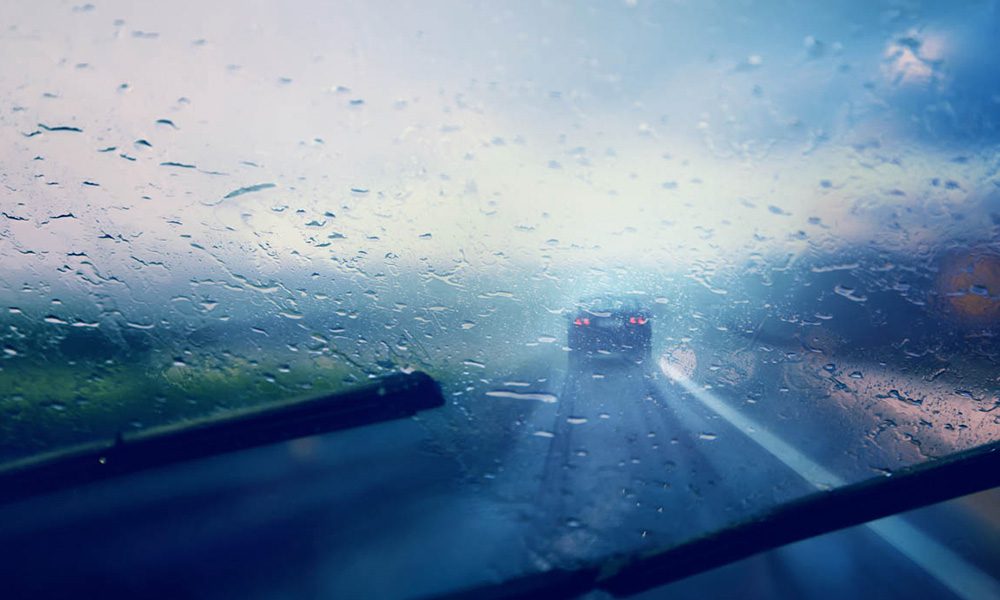
Author: EMC Insurance
Most drivers know that it’s important to slow down, turn off cruise control and avoid tailgating when driving on snowy and icy roads. However, many drivers are surprised to learn that rain can be nearly as treacherous to drive in as snow and ice. Not only are flooded streets and swollen creeks a danger for sweeping vehicles off the road, but water-slick roadways can also cause hydroplaning. According to the Federal Highway Administration, 75 percent of all weather-related vehicle crashes occur on wet pavement, with 47 percent of them occurring when it’s raining.
What Is Hydroplaning?
Hydroplaning can happen when water flows between your car’s tires and the pavement. The water prevents tires from gripping the road, which can lead to a loss of steering control and accidents. The effects of hydroplaning are similar to the loss of control drivers experience when driving on icy streets. It may feel like your vehicle is floating and that you have no control over the direction you are heading.
Prevent Hydroplaning
“There are ways to prevent hydroplaning,” says EMC Senior Engineer Jim Stotser, “starting with good vehicle maintenance, and following up with training drivers how to handle situations where hydroplaning may occur.” These include:
- Checking your tires. When performing maintenance, make sure tire tread is in good condition and tires are inflated correctly. The lower your tire inflation and thinner the tread, the greater the possibility of hydroplaning. That’s because deeper tire grooves scatter the water you drive through, allowing for better traction. Rotating tires frequently and replacing them as needed keeps you safer on all roadways, but especially on those that are water- or ice-covered.
- Understanding the dangers. It’s not just heavy rains and deep puddles that cause hydroplaning. One of the most dangerous times for hydroplaning is within the first 10 minutes of a rain shower. Raindrops mix with dust and oils on the road, and the combo makes a very slick surface. Driving through a large puddle or an area of standing water—even if it’s not raining and the streets aren’t fully wet—can also create conditions for hydroplaning.
- Driving slower and hanging back. Slowing down is the safest move when the pavement is wet. Not only will you have better visibility, but the slower you drive, the less likely you are to hydroplane. That’s because tires get better traction on wet pavement at lower speeds. How much slower to drive depends on how much rain, the type of pavement and your tire condition. Some experts say that hydroplaning is rare at speeds as low as 30 mph, others suggest 45 mph as a sufficiently safe speed when the pavement is wet. Leave more space between your vehicle and those ahead of you, as it will take longer to stop your vehicle when the pavement is wet. When driving 35 mph on wet pavement, it may take 120 feet or more to come to a stop, while dry-road stops take only 60 to 100 feet.
- Turning off cruise control. Driving with cruise control on can cause your tires to spin faster if you start to hydroplane, so turning this feature off is a proactive move. Jim also recommends that truck drivers avoid using Jake brakes when driving on wet pavement.
- Changing lanes if possible. Jim notes that right lanes often have deeper depressions that collect rainwater and those dips can collect enough water to cause hydroplaning. Outside lanes bounded by curbs may also funnel more water flow, which can lead to an increased hydroplaning risk. Freeway exit and entrance ramps also pose a similar water-flow danger. When water combines with the sharp curves of ramps, you can easily lose control of your vehicle. His advice: Slow down when entering a ramp when the pavement is wet.
If you do begin to hydroplane, Jim advises taking your foot off the accelerator, continuing to steer toward the course of the road and remaining calm.
